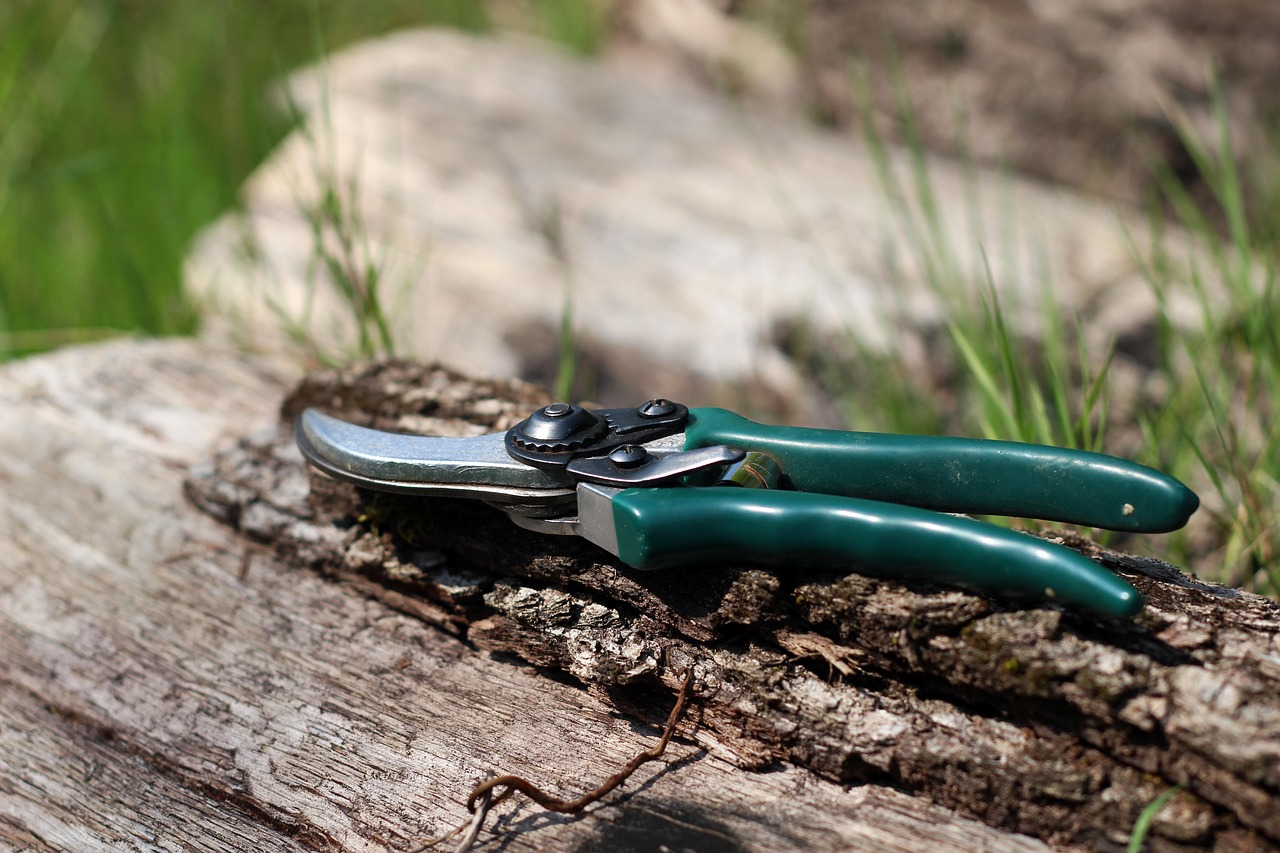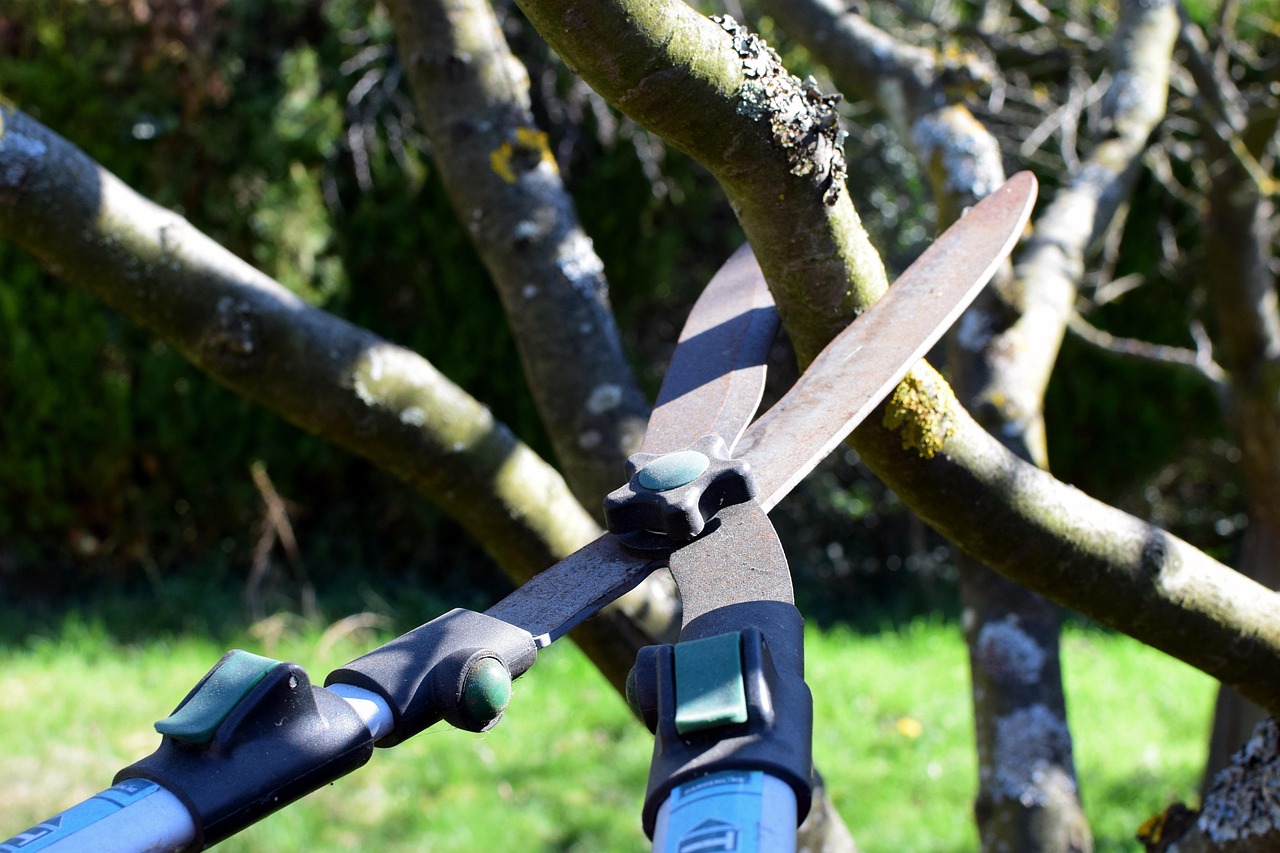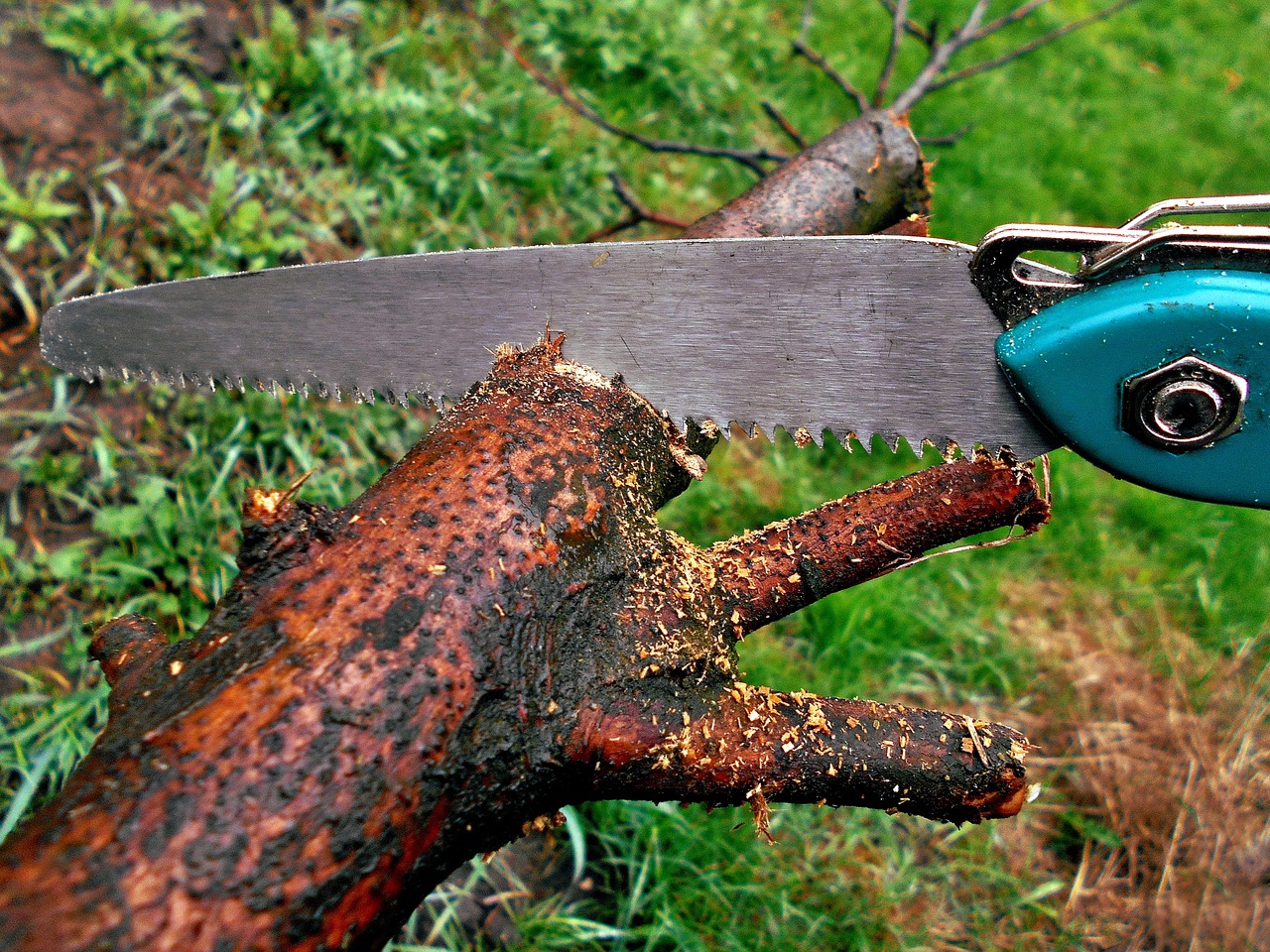Winter pruning is essential for reducing the risk of heavy snow load damage on trees and shrubs. By removing excess branches and improving structure, plants can withstand winter weather better, minimizing breakage and ensuring a healthy recovery in spring.
As winter approaches, many gardeners and landscapers begin to think about the health of their plants. One of the most effective strategies to prepare for the challenges of winter weather is winter pruning. This practice not only enhances the aesthetic appeal of trees and shrubs but also plays a crucial role in their structural integrity during heavy snowfall.

Heavy snow can accumulate on branches, leading to breakage or even tree failure. Pruning before the snow falls helps to reduce the amount of snow that can settle on branches. By strategically cutting back certain branches, you can lessen the overall weight and improve the plant’s ability to handle adverse weather conditions.
Understanding Winter Pruning
Winter pruning involves trimming trees and shrubs during their dormant season, typically from late fall to early spring. During this time, plants are less susceptible to shock, and it is easier to see their structure without leaves obstructing your view. The benefits of winter pruning extend beyond just preparing for snow loads; it also promotes healthier growth in the spring.
The process of winter pruning includes several key practices:

- Removing Dead or Diseased Wood: This helps improve air circulation and reduces the risk of pest infestations.
- Shaping the Plant: Pruning can create a balanced shape, which is essential for stability under heavy snow.
- Encouraging New Growth: By cutting back certain branches, you stimulate new growth in the spring, leading to a healthier plant.
Before starting, it’s important to understand the types of cuts you will be making. Here are some common pruning cuts:
| Type of Cut | Description |
|---|---|
| Thinning Cut | This removes entire branches at their point of origin, reducing density. |
| Heading Cut | This shortens a branch, encouraging bushy growth. |
| Reduction Cut | This reduces the length of a branch while preserving its integrity. |
The Importance of Timing
Timing is crucial when it comes to winter pruning. Ideally, pruning should be done during the dormant season when trees are not actively growing. This timing helps minimize stress on the plant. Additionally, pruning too early in the winter may expose cuts to damaging frost, while waiting too long could risk ice and snow damage before you have a chance to prune.
It is generally best to prune during a dry day when temperatures are above freezing. This reduces the risk of ice forming on cuts and allows for quicker healing. Furthermore, pruning after a snowfall can help assess which branches have been compromised, allowing for targeted cuts that preserve the overall structure of the tree or shrub.

Tools for Successful Winter Pruning
Having the right tools is essential for effective winter pruning. Here are some recommended tools:
- Hand Pruners: Ideal for small branches up to ¾ inch thick.
- Loppers: Useful for branches that are ¾ inch to 2 inches thick.
- Saws: A pruning saw or chainsaw is necessary for larger branches.
- Safety Gear: Gloves and eye protection should always be worn.
Before beginning your pruning project, ensure your tools are sharp and clean. Sharp tools make cleaner cuts, reducing the risk of disease entering through damaged bark. Clean tools also help prevent the spread of diseases between plants.
Common Mistakes to Avoid
While winter pruning can be beneficial, there are several common mistakes that should be avoided:

- Over-pruning: Removing too much foliage can harm the tree or shrub.
- Poor Cutting Technique: Improper cuts can lead to jagged edges that invite disease.
- Ignoring Plant Type: Different species may have specific pruning needs that should be researched beforehand.
By being aware of these pitfalls, you can ensure a successful pruning session that results in healthier plants ready to withstand the rigors of winter weather. Taking the time to properly prune your trees and shrubs not only prepares them for snow loads but also sets them up for robust growth in the upcoming spring months.
Techniques for Effective Winter Pruning
To maximize the benefits of winter pruning, it is essential to understand various techniques that can be employed. Different plants may require specific approaches, but some general practices can enhance the health and structure of most trees and shrubs. Here are some effective pruning techniques:
1. Crown Thinning
Crown thinning is the process of selectively removing branches to improve air circulation and light penetration within the canopy. This technique helps prevent snow accumulation in densely branched areas, which can lead to breakage.
- Identify: Look for branches that are crossing or growing inward.
- Cut: Remove selected branches at the point where they connect to a larger branch.
- Maintain: Ensure that you keep a balanced shape as you thin out the crown.
2. Structural Pruning
Structural pruning focuses on shaping young trees for future growth. It helps in establishing a strong framework that can withstand heavy snow loads.
- Choose a Leader: Select a strong central leader to guide the tree’s growth.
- Remove Competing Leaders: Eliminate any competing branches that detract from the main leader.
- Encourage Strong Branch Angles: Look for branches that grow at 45- to 60-degree angles from the trunk.
3. Heading Cuts
Heading cuts are used to shorten branches while promoting bushy growth. This technique can be particularly helpful for shrubs that may become top-heavy in winter.
- Select a Branch: Choose a branch that needs shortening.
- Make the Cut: Cut just above a bud to encourage growth in that direction.
- Avoid Overheading: Ensure not to remove too much of the plant at once.
Choosing the Right Time for Pruning
The timing of your winter pruning can significantly affect the outcome. As mentioned previously, the best time to prune is during the dormant season, but there are nuances to consider:
- Post-Snowfall Pruning: If heavy snow has already accumulated, assess the damage before pruning. Remove broken branches first to prevent further injury to the plant.
- Weather Conditions: Aim for dry days above freezing to reduce the risk of frost damage to cuts.
- Avoid Pruning During Ice Storms: Wait until conditions improve before attempting any cuts.
Species-Specific Pruning Considerations
Different species of trees and shrubs may have unique characteristics that influence how and when they should be pruned. Here are some general guidelines for popular types of plants:
Deciduous Trees
Deciduous trees, which lose their leaves in winter, are often best pruned while they are dormant. This period allows for better visibility of their structure and reduces stress on the plants.
Evergreen Trees
Evergreens may require different treatment due to their continuous foliage. Light pruning is usually acceptable during late winter, but heavy cuts should be avoided until they enter dormancy.
Shrubs
Shrubs can vary widely in their pruning needs. Some flowering shrubs benefit from pruning immediately after they bloom, while others are best pruned during dormancy. Always check specific requirements for each species.
| Plant Type | Best Time to Prune | Notes |
|---|---|---|
| Deciduous Trees | Late Winter | Prune when dormant for best results. |
| Evergreen Trees | Late Winter | Avoid heavy cuts; focus on shaping. |
| Shrubs | Varies by Species | Research individual needs for optimal timing. |
Post-Pruning Care
After completing your winter pruning, it is essential to care for your plants properly. Taking steps to support their recovery will enhance their resilience against future weather challenges:
- Watering: Ensure your plants receive adequate moisture during dry spells.
- Mulching: Apply mulch around the base to retain moisture and regulate temperature.
- Pest Monitoring: Keep an eye out for potential pests or diseases that may arise after pruning.
The combination of proper winter pruning techniques, appropriate timing, and diligent post-pruning care will lead to healthier plants. By investing time and effort into this process, you will help your trees and shrubs thrive even through harsh winter conditions.
Signs of Winter Damage and Recovery
Even with proper winter pruning, trees and shrubs can still suffer from winter damage. Understanding the signs of distress and knowing how to manage recovery is crucial for maintaining plant health. Here are some common indicators of winter damage:
1. Broken or Cracked Branches
Heavy snow loads can lead to broken branches. If you notice cracks or splits in limbs, it is essential to assess the damage promptly.
- Assess Severity: Determine if the branch can be saved or should be removed.
- Make Clean Cuts: Use proper pruning techniques to remove damaged areas, preventing further injury.
2. Bark Damage
Cold temperatures and heavy snow can cause bark to split or peel away from the tree. This can expose the inner layers to pests and diseases.
- Inspect for Injury: Look for cracks or loose bark around the base and main branches.
- Protect Exposed Areas: Use tree wraps or wound dressings to shield damaged areas from further harm.
3. Leaf Drop and Browning
In evergreen species, prolonged exposure to harsh conditions can lead to needle drop or browning. This may indicate stress from the cold or desiccation.
- Check Moisture Levels: Ensure plants are adequately watered during dry winter months.
- Avoid Over-Fertilization: Too much fertilizer can exacerbate stress; use it sparingly in winter.
Preventive Measures for Winter Damage
Taking preventive measures can significantly reduce the impact of winter weather on your plants. Here are some strategies to consider:
1. Proper Mulching Techniques
Applying mulch is one of the best ways to protect roots and maintain soil moisture during winter months. Here are some tips for effective mulching:
- Choose the Right Material: Organic mulches like wood chips or bark work well, while inorganic options like gravel can be used in certain situations.
- Apply Adequately: Spread a layer of 2 to 4 inches around the base of plants, but keep it away from the stem to prevent rot.
- Replenish as Needed: Check mulch levels periodically and add more as it decomposes or gets displaced.
2. Wind Protection
Strong winds can exacerbate winter damage by drying out plants and causing physical harm. Consider these protective measures:
- Use Windbreaks: Planting evergreens or installing fences can help reduce wind exposure.
- Avoid Open Spaces: If possible, position vulnerable plants closer to buildings or larger trees that can provide shelter.
- Staking Young Trees: Use stakes to support young trees against strong winds until their root systems are established.
The Role of Fertilization Before Winter
Fertilizing before winter can enhance a plant’s ability to withstand harsh conditions. However, it is essential to do this correctly to avoid stressing the plant:
- Select a Balanced Fertilizer: Use a slow-release formula that provides nitrogen, phosphorus, and potassium.
- Avoid Late Season Fertilization: Fertilizing too late can promote new growth, making plants more susceptible to frost damage.
- Soil Testing: Conduct soil tests to determine nutrient levels and adjust fertilization accordingly.
Understanding Microclimates
Microclimates refer to small areas where climate conditions differ from the general weather in surrounding areas. Recognizing these variations can help in planning for winter damage prevention:
- Sheltered Locations: Areas near buildings, walls, or other structures may retain heat better and provide additional protection for plants.
- Sun Exposure: South-facing slopes typically receive more sunlight, helping snow melt faster and reducing ice accumulation on plants.
- Drainage Considerations: Poorly drained areas may experience more severe frost damage; ensure good drainage around your plants.
Resources for Pruning and Care
Accessing the right resources can greatly enhance your winter pruning efforts. Consider the following options for guidance and support:
- Local Extension Services: Many universities offer extension programs that provide information on local plant care practices.
- Online Tutorials: Websites and videos dedicated to gardening often contain valuable tips on pruning techniques specific to various species.
- Books and Guides: Invest in reputable gardening books that cover pruning methods tailored to your climate zone.
The combination of understanding winter damage signs, taking preventive measures, and utilizing available resources will help ensure the long-term health of your trees and shrubs. By being proactive, you will create a landscape that is resilient against the challenges presented by winter weather.
Winter Pruning and Its Long-Term Benefits
Engaging in winter pruning not only prepares your trees and shrubs for the immediate challenges of snow and ice but also fosters long-term health and vitality. Regular pruning practices can lead to numerous benefits, including enhanced growth, improved flowering, and better resistance to diseases and pests. Over time, well-pruned plants develop a more robust structure that can withstand extreme weather conditions.
Additionally, winter pruning allows you to shape your plants effectively. By removing unwanted branches, you create a more aesthetically pleasing appearance. This can be particularly important for ornamental trees and shrubs that serve as focal points in your landscape. A well-maintained garden not only adds beauty to your property but can also increase its overall value.
The Role of Community in Pruning Practices
Being part of a gardening community can enhance your winter pruning efforts. Collaborating with fellow gardeners allows you to share experiences, techniques, and resources. Here are some ways to engage with your local gardening community:
- Join Gardening Clubs: Many communities have clubs that focus on gardening. These clubs often host events, workshops, and discussions about seasonal care.
- Attend Workshops: Look for local workshops on pruning and plant care. These hands-on experiences provide valuable learning opportunities.
- Participate in Community Gardens: Working alongside others in community gardens can provide practical experience and foster relationships with fellow gardening enthusiasts.
Understanding the Local Ecosystem
Every landscape is unique, and understanding your local ecosystem can help you make informed decisions about winter pruning. Consider the following factors:
- Soil Type: Different soil types can affect plant health. Conduct soil tests to understand nutrient levels and pH balance.
- Climate Patterns: Know the typical weather patterns in your area. This helps you anticipate when to prune and how to prepare for potential snow loads.
- Native Species: Incorporating native plants into your landscape can improve resilience against local pests and diseases while requiring less maintenance.
Leveraging Technology in Gardening
In today’s digital world, technology can play a significant role in enhancing your gardening practices. Here are some ways to leverage technology for effective winter pruning:
- Gardening Apps: Numerous apps provide guidance on plant care, reminders for pruning schedules, and pest identification.
- Online Forums: Engaging in online gardening forums allows you to ask questions, share experiences, and learn from experts and fellow enthusiasts.
- Social Media Groups: Join social media groups dedicated to gardening to stay updated on trends, techniques, and community events.
Final Thoughts
Winter pruning is a crucial practice for anyone interested in maintaining a healthy and resilient landscape. By understanding the techniques involved, timing your efforts correctly, and incorporating proper post-pruning care, you can significantly reduce the risk of snow load damage. The right approach not only strengthens the physical structure of your plants but also enhances their overall health and appearance.
Investing time in winter pruning pays off through improved plant vitality and beauty. Additionally, engaging with the local gardening community and utilizing modern technology can enrich your gardening journey. As you prepare for each winter season, remember that proactive care ensures that your trees and shrubs will thrive when spring arrives.
Ultimately, the knowledge gained from proper winter pruning practices leads to a more resilient landscape capable of withstanding the harshest of winters. Embrace these strategies, and watch as your garden flourishes through all seasons.
